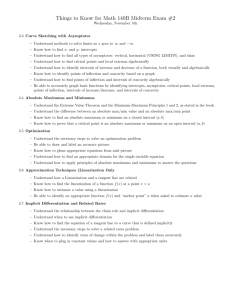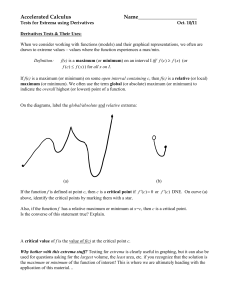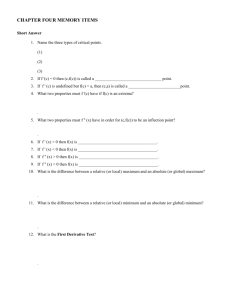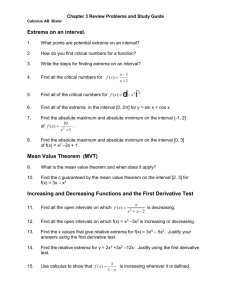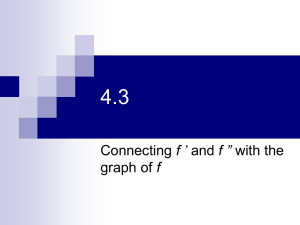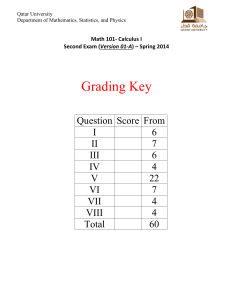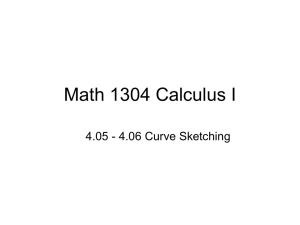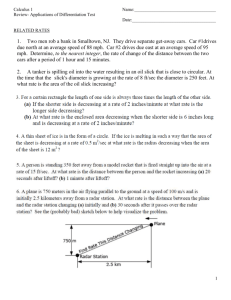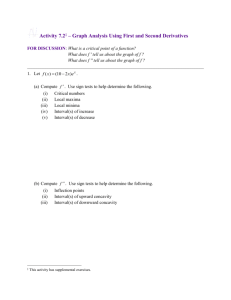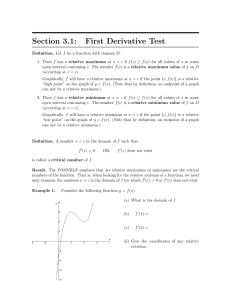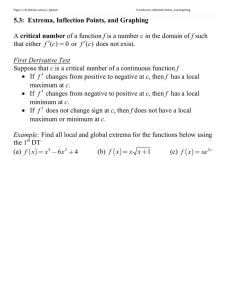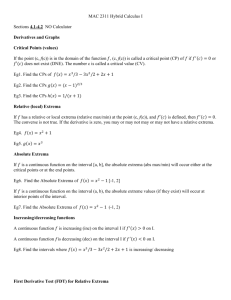Chapter3-2
advertisement
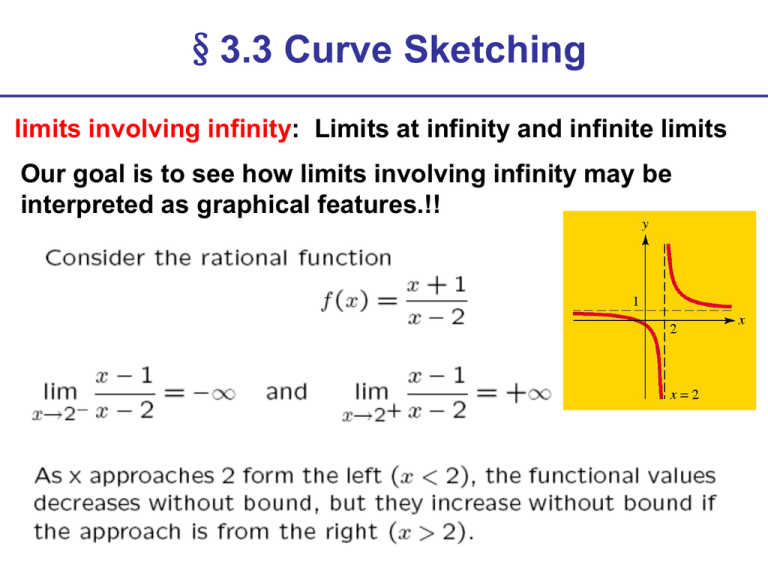
§3.3 Curve Sketching limits involving infinity: Limits at infinity and infinite limits Our goal is to see how limits involving infinity may be interpreted as graphical features.!! §3.3Vertical Asymptotes to be continued §3.3 Vertical Asymptotes The graph approaches the horizontal line y=1 as x increase or decrease without bound. to be continued f ' (1) -------- to be continued ++++++ -1 Asymptote -------- 1 Max Type of concavity Sign of -------- -------- -1 No inflection ++++++ 2 inflection 7. The vertical asymptote (dashed line) breaks the graph into two parts. join the features in each separate part by a smooth curve to obtain the completed graph. §3.4 Optimization Absolute Maxima and Minima of a Function Let f be a Function defined on an interval I that contains the number c. Then f(c) is the absolute maximum of f on I if f(c) f(x) for all x in I f(c) is the absolute minimum of f on I if f(c) f(x) for all x in I Absolute extrema often coincide with relative extrema but not always! §3.4 The Extreme Value Property The Extreme Value Property A function f(x) that is continuous on the closed Interval a x b attains its absolute extrema on the interval either at an endpoint of the interval (a or b) or at a critical number c such that a<c<b. §3.4 The Extreme Value Property to be continued to be continued §3.4 Absolute Extrema to be continued to be continued to be continued §3.4 Two General Principle of Marginal Analysis §3.4 Two General Principle of Marginal Analysis to be continued §3.4 Two General Principle of Marginal Analysis Explanation in Economics The marginal cost (MC) is approximately the same as the cost of producing one additional unit. If the additional unit costs less to produce than the average cost (AC) of the existing units (If MC<AC), then this lessexpensive unit will cause the average cost per unit to decrease. On the other hand, if the additional unit costs more than the average cost of the existing units (if MC>AC), then this more-expensive unit will cause the average cost per unit to increase. However (if MC=AC), then the average cost will neither increase nor decrease, which means (AC)’=0 §3.4 Price Elasticity of Demand §3.4 Price Elasticity of Demand §3.4 Price Elasticity of Demand to be continued §3.4 Price Elasticity of Demand §3.4 Price Elasticity of Demand Summary Applications of the derivative A. Increasing and decreasing functions, critical point, relative maxima and minima: First Derivative B. Concavity, inflection point: Using the second derivative to test for concavity and inflection points Second derivative test for relative extrema C. Limits involving infinity: Vertical Asymptotes and Horizontal Asymptotes (rational functions) D. Optimization: Absolute maximum and absolute minimum, marginal analysis criterion for maximum profit and minimal average cost, elasticity of demand
